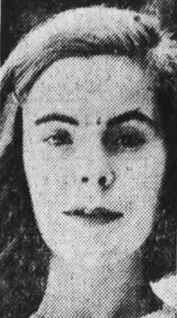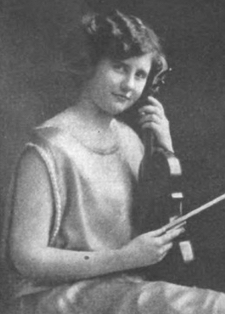
The Brooklyn Bridge is a hybrid cable-stayed/suspension bridge in New York City, spanning the East River between the boroughs of Manhattan and Brooklyn. Opened on May 24, 1883, the Brooklyn Bridge was the first fixed crossing of the East River. It was also the longest suspension bridge in the world at the time of its opening, with a main span of 1,595.5 feet (486.3 m) and a deck 127 ft (38.7 m) above mean high water. The span was originally called the New York and Brooklyn Bridge or the East River Bridge but was officially renamed the Brooklyn Bridge in 1915.

The Verrazzano-Narrows Bridge is a suspension bridge connecting the New York City boroughs of Staten Island and Brooklyn. It spans the Narrows, a body of water linking the relatively enclosed Upper New York Bay with Lower New York Bay and the Atlantic Ocean, and is the only fixed crossing of the Narrows. The double-deck bridge carries 13 lanes of Interstate 278, with seven lanes on the upper level and six on the lower level. The span is named for Giovanni da Verrazzano, the first documented European explorer to enter New York Harbor and the Hudson River in 1524.

Church Avenue is an express station on the IND Culver Line of the New York City Subway. Located at Church and McDonald Avenues in Kensington, Brooklyn, it is served by the F and G trains at all times, and by the <F> train during rush hours in the peak direction.
Capezio is the trade name of Capezio Ballet Makers Inc., an American manufacturer of dance shoes, apparel and accessories.

The David N. Dinkins Municipal Building is a 40-story, 580-foot (180 m) building at 1 Centre Street in Manhattan, near Centre Street's intersection with Chambers Street in New York City. The structure was built to accommodate increased governmental space demands after the 1898 consolidation of the city's five boroughs. Construction began in 1909 and continued through 1914 at a total cost of $12 million.
Zilia Sánchez Dominguez is a Puerto Rico-based Cuban artist born in Havana in 1926. She started her career as a set designer and an abstract painter for radical theatre groups in Cuba before the Cuban revolution of 1953-59. Sanchez blurs the lines between sculpture and painting by creating canvases layered with three dimensional protrusions and shapes. Her works are minimal in color, and have erotic overtones.

The Empire Building is an office skyscraper at 71 Broadway, on the corner of Rector Street, in the Financial District of Manhattan in New York City. It was designed by Kimball & Thompson in the Classical Revival style and built by Marc Eidlitz & Son from 1897 to 1898. The building consists of 21 stories above a full basement story facing Trinity Place at the back of the building and is 293 feet (89 m) tall.

Industry City is a historic intermodal shipping, warehousing, and manufacturing complex on the Upper New York Bay waterfront in the Sunset Park neighborhood of Brooklyn, New York City. The northern portion, commonly called "Industry City" on its own, hosts commercial light manufacturing tenants across 6,000,000 square feet (560,000 m2) of space between 32nd and 41st Streets, and is operated by a private consortium. The southern portion, known as "Bush Terminal", is located between 40th and 51st Streets and is operated by the New York City Economic Development Corporation (NYCEDC) as a garment manufacturing complex.

The Brooklyn Navy Yard is a shipyard and industrial complex located in northwest Brooklyn in New York City, New York. The Navy Yard is located on the East River in Wallabout Bay, a semicircular bend of the river across from Corlears Hook in Manhattan. It is bounded by Navy Street to the west, Flushing Avenue to the south, Kent Avenue to the east, and the East River on the north. The site, which covers 225.15 acres (91.11 ha), is listed on the National Register of Historic Places.

Wyckoff Heights is an area within the New York City boroughs of Brooklyn and Queens, straddling the border between Bushwick, Brooklyn, and southwest Ridgewood, Queens. Wyckoff Heights was urbanized starting in the late 19th century, and took its name from the Wyckoff family, who owned the land. The area was home first to many German immigrants, later followed by Italian and more recently Latino and Eastern-European residents.

Mary Dranga Campbell, born Mary Ogden Dranga, was an American social worker, active in work on blindness prevention and rehabilitation.

Grace Crosby Hamman was an American researcher and government official, focused on the causes of blindness and administration of services for blind people in Hawaii.

Captain Tilly Park is a 9.16-acre (3.71 ha) park in Jamaica Hills, Queens, New York, north of downtown Jamaica. It is bordered by 165th Street to the west, 85th Avenue to the north, Chapin Parkway and Gothic Drive to the northeast, and Highland Avenue to the south. The park consists of a kettle pond named Goose Pond, the only remaining kettle pond in Jamaica Hills.

Tina Flade, born Albertine Flade, and later known as Tina Flade Mooney, was a German modern dancer. From 1934 to 1938, she taught dance at Mills College in California.

Marie Frugone, later Marie Frugone Scileppi, was an American journalist and community leader, who wrote for the Brooklyn Daily Eagle and the Brooklyn Times-Union in the 1930s. She worked with the Red Cross in France and Italy during World War I.
Harriet T. Righter was an American businesswoman, the president of Selchow and Righter, a game company, which was co-founded by her father. Her best-known addition to the company's properties was Scrabble, which she thought was "a nice little game".
Juliette Kang is a Canadian violinist. In 1994, she earned the gold medal at the International Violin Competition of Indianapolis. Kang went on to have an international solo career. She joined the Philadelphia Orchestra in 2005, where she holds the position of first associate concertmaster.
Four Walls was an artist collaborative event space. From 1984–2000, it hosted a wide range of one night activities, such as artist conversations, panel discussions, exhibitions, screenings and performances. The organization consisted of two consecutive phases from 1984–1988 in Hoboken, New Jersey and from 1991–2000 in the Greenpoint Williamsburg neighborhood of Brooklyn, New York. Throughout its life Four Walls was situated in growing creative communities where it served to encourage an exchange of ideas and generated alternative ways of experiencing art.

Julie Yip-Williams was an American lawyer and writer, born Diep Ly Thanh in Vietnam.

Ruth Lowther Kemper was an American violinist, music educator, conductor, and arts administrator. She was executive director of the Turtle Bay Music School from 1956 to 1969.















